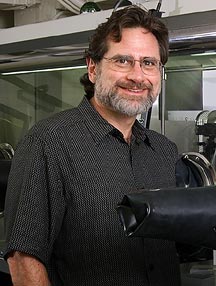

Study Unveils Structure of Key Component of Antibiotic Resistant Bacteria
By Eric Sauter
Working in close collaboration with other researchers, scientists from The Scripps Research Institute have uncovered for the first time the structural chemistry behind the “astonishing multi-functionality” of the bacterial GC (for gonococcal) Type IV pilus filament, which plays an essential role in Neisseria gonorrhoeae pathogenesis. The Type IV pili allow antibiotic-resistant strains of N. gonorrhoeae to escape the immune system and cause persistent and recurrent gonorrhea infections.
The detailed structural chemistry of these filaments unveiled by the study provides valuable new insights into the filaments’ basic assembly and diverse functions, and may offer therapeutic targets and other novel treatment options.
The study is being published September 1 in the journal Molecular Cell.
“These multi-functional membrane-anchored Type IV pili play an essential role in the virulence of many Gram-negative bacterial pathogens in diseases such as gonorrhea, cholera, food poisoning, and even tularemia (“rabbit fever”), caused by the potential bio-terrorism agent Francisella tularensis,” said John Tainer, a professor at Scripps Research and member of its Skaggs Institute for Chemical Biology. “Finally understanding the details of the pilus structure offers the possibility that we can genetically modify these filaments to generate predetermined and different functionalities, which would help in the design of pilus-based vaccines. Certain details of the Type IV pilus structure that we identified could also provide targets for the design of small molecule inhibitors as pathogen blockers.”
According to the Centers for Disease Control (CDC), drug-resistant strains of gonorrhea are on the increase, making successful treatment of this sexually transmitted disease all the more difficult. These strains continue to emerge, the agency said, despite the fact that overall infection rates have dropped, reaching an all-time low in 2004. Gonococcal strains have grown resistant to an ever-widening variety of treatments including penicillins, tetracyclines, spectinomycin, and fluoroquinolones. Newer treatments have not been spared, either, the CDC said—resistance to ciprofloxacin and ofloxacin already exceeds 40 percent in some Asian countries.
Using cryo-electron microscopy and x-ray crystallography, the researchers were able to determine in detail the GC Type IV pilus structure, shedding light on the filaments’ multi-functionality, which includes bacterial movement and microcolony formation, as well as their assembly-disassembly process. These new findings, the study noted, suggest that there may be a unified assembly mechanism for these types of bacterial filaments.
Until this study, Tainer added, three-dimensional structural analyses of Type IV pili have proved extremely difficult due to the thinness and apparent featurelessness of the filaments.
One major puzzle of the GC Type IV pilus assembly process involves the bacteria’s ability to continually modify the sequence of the pilin protein subunit to avoid a protective immune response. This ability to evade the immune system most often results in persistent, repeated gonorrheal infections, which in turn may lead to infertility, arthritis, endocarditis, and meningitis.
The high resolution GC Type IV pilus structure showed for the first time the precise placement of the pilin subunits. “The pilin subunit regions that are most accessible to antibodies are also the most variable,” said Lisa Craig, formerly a research associate at Scripps Research, now assistant professor at Simon Fraser University, Burnaby, British Columbia, Canada. “These regions protrude from the filament surface and obscure the more conserved regions. To design effective Type IV pilus-based vaccines, it will be necessary to redirect the immune response to the less accessible regions on the pilus filament, which are more likely to elicit broadly neutralizing antibodies. These findings renew hope for generating pilus-based vaccines for gonorrhoea.”
The Type IV pili cover the surface of gonococci and are present on virtually all other Gram-negative bacteria. The high resolution GC Type IV pilus structure serves as a prototype for all Type IV pili, a discovery that could provide researchers broad insights into the filaments’ architecture and diverse function.
In addition to Tainer and Craig, authors of the study, titled “"Type IV Pilus Structure by Cryo-Electron Microscopy and Crystallography: Implications for Pilus Assembly and Functions," include Niels Volkmann of the Burnham Institute; Andrew S. Arvai, Michael E. Pique and Mark Yeager of The Scripps Research Institute; and Edward H. Egelman of the University of Virginia Health Sciences Center.
The study was supported by the National Institutes of Health and the Canadian Institutes of Health Research (L.C.).
Send comments to: mikaono[at]scripps.edu

Professor John Tainer's lab focuses on structural biology and design projects that concern fundamental questions of molecular and cellular biology relevant to human disease.

The structure of the Neisseria gonorrhoeae Type IV pilus, solved by integrated cryo-electron microscopy, helical image processing, x-ray crystallography, and computational docking.
